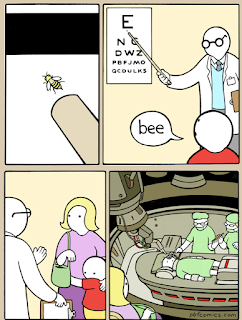European Comics
For this week, I read Persepolis by Marjane Satrapi The story is set in 1980, Iran. She writes about growing up during a time of religious turmoil and social reform. She grew up thinking she was the next prophet, here to rescue humanity. She desired fairness and justice. On one hand she is very religious, on the other hand her parents are progressive and actively participated in the protests. She becomes close to her Uncle as he teacher her a lot about the world. However, he was believed to by a spy by the Iranian government and was executed. This affects Marjane a lot as a child. She goes through hardships and is separated from her loved ones. The story does well to capture the life of a child growing up in social unrest. It captures the conflict she feels because she wants the best for her country but and the same time disagrees with how her people are being negatively affected. The style it is drawn in is simplistic and graphic, in almost a child-like manner. It only has black and white, however it is not too hard on the eyes because Satrapi uses mostly smooth curves and shaky lines in her characters. I would describe this type of drawing as icons, symbols that represent things in reality. Persepolis is an example of how visuals do not have to be hyperrealistic and gritty in order to tell a serious story such as this one.

Comments
Post a Comment